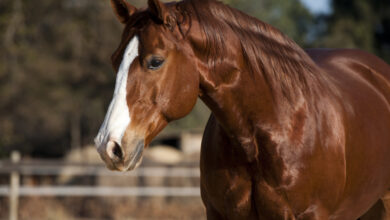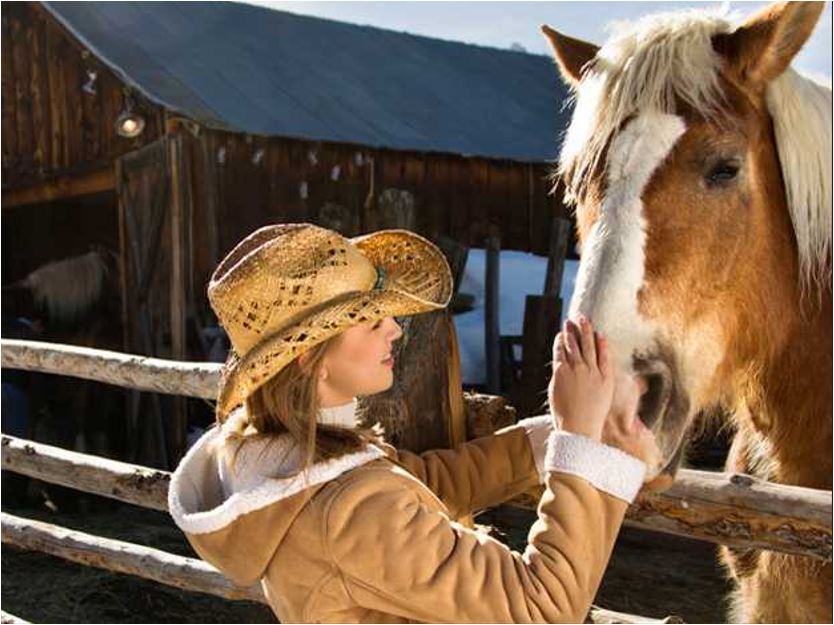Methods of Training Used

As well as specific training relating to the particular discipline the horse is to be used for, all horses will need to complete a period of base training. This type of training is sometimes referred to as aerobic training, endurance training, or long, slow distance training (LSD).
During initial training of horses for eventing or racing, it is important that the activity does not remain the same from week to week. Every 10-14 days, the speed of the exercise and or the distance should be gradually increased, to encourage gradual adaptation of the body.
Care should also be taken not to suddenly increase the speed or intensity without gradual introduction, as this places the support structures under stress and may result in injury.
There are many different types of training regime, each with advantages and disadvantages: Fartlek training, which is unstructured, and involves the horse running as far and fast as it wishes.
Resistance training refers to use of exercises where muscle groups work against resistance, for example walking the horses while they carry large weights. Interval training is a technique that consists of set
work periods at a specific speed, alternated with set rest periods. The advantages of this technique are that the work periods are kept short, reducing the risk of injury and lactic acid build up. Most onditioning programs
comprise a mixture of continuous training and interval training.
Continuous training involves a fairly constant intensity of exercise over a period, in contrast to interval training where the short periods of exercise alternate with the recovery intervals which allow for partial recovery of the heart rate and partial lactate removal from the muscles.
Endurance training is carried out over long distances, and the heart rate is kept at a low rate throughout the exercise. The duration is increased gradually over a period of weeks.
For all training programmes, a period of base training at low intensity is usually carried out for the first few weeks. This can then be tailored for the specific discipline, for example jumping and dressage training will be introduced for event horses, and periods of sprint training for racehorses.
Cross training refers to the use of exercise that is not specific to the discipline the horse is used for, for example horses may be exercised using swimming. This is a good way of increasing cardiovascular fitness without incurring concussion on the limbs.
In addition to the work days when training is carried out, the regime should also include recovery days, especially when the horse is in strenuous training. A day or two after hard exercise, muscle cells are actively repairing themselves by the process of anabolism which is protein building, and during this period of time muscle cell glycogen content is restored. Therefore any exercise carried out after a bout of hard work such as a race should be light.
When the objective is to increase cardiovascular fitness, workouts are initially performed 2 or 3 times per week, and in the later stages of the programme, the frequency may be reduced so that the intensity can be increased, while still allowing sufficient time for tissue repair between the workouts. This reduction in frequency applies particularly to endurance horses that are being prepared for rides longer than 25 miles and to eventers.
Once fitness has been achieved, the objective is to maintain the desired level of fitness. To do this, workouts should be performed once or twice a week at a constant exercise intensity, as fitness may be reduced if the workouts are performed less frequently than once per week.
The terrain used during the training can also help to develop the horse for its specific discipline. Uphill work encourages development of the muscles in the hindquarters. A gradual downhill gradient is useful for strength training and encouraging a high degree of collection because the effort required to establish and maintain collection on a slope is exaggerated compared with working on the flat. If the horse is being prepared for eventing, then trotting and cantering downhill will be required to help the horse learn to balance properly and develop the correct muscles.
Fittening horses for a specific event should not be rushed, and extra time should be allowed so that it is not tempting to overtrain the horse at the last minute before a competition. Training a three-day event horse is very demanding, and for a horse to be successful in this sphere, it requires superior stamina, strength (for jumping), skills in timing and collection for dressage and jumping, and also an ability to recover quickly so that it can carry on competing for three consecutive days.
Design of suitable training programs depends on an understanding of the metabolic demands of the event. Energy resynthesis during a cross country event is provided by oxidative metabolism and glycolysis, so training should enable both of these pathways to develop maximum efficiency.




